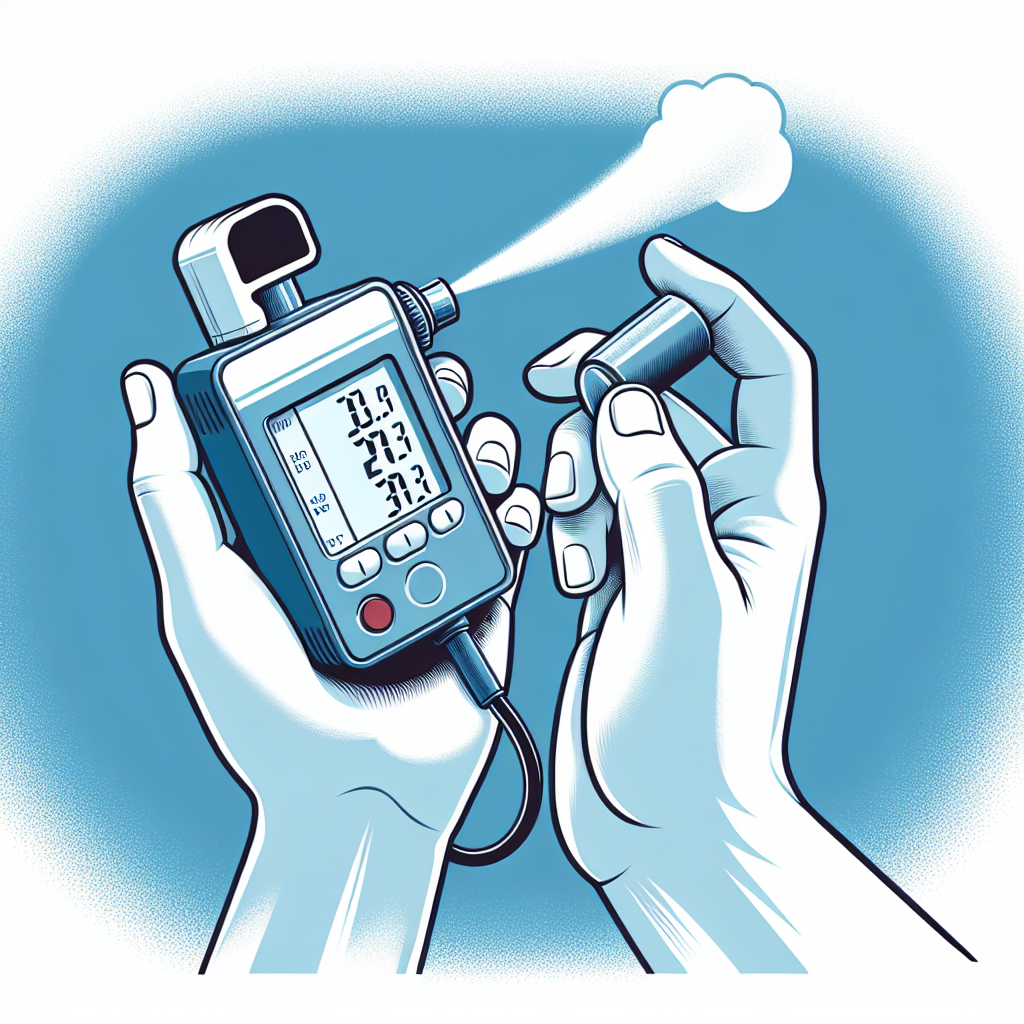In this article, you will discover the various diagnostic tests available to identify different types of asthma. Whether you have been recently diagnosed, or simply want to understand more about your condition, these tests can provide valuable insights into the specific type of asthma you may have. By exploring these tests, you can gain a better understanding of your symptoms and tailor your treatment plan to suit your individual needs. So, let’s explore the diagnostic tests for different types of asthma and empower you to take control of your respiratory health.
1. Spirometry
Spirometry is a commonly used diagnostic test for asthma. It measures the volume of air that you can forcefully exhale in one second (FEV1) and the maximum volume of air that you can forcefully exhale after taking a deep breath (forced vital capacity or FVC). These measurements can help determine the severity of airway obstruction and the presence of asthma.
1.1. Forced expiratory volume in one second (FEV1)
FEV1 is an important measurement that indicates how effectively your lungs can empty themselves of air in one second. It is expressed as a percentage of the normal value for your age, gender, and height. A lower FEV1 suggests airway obstruction, which is commonly seen in asthma.
1.2. Forced vital capacity (FVC)
FVC measures the maximum volume of air that you can forcefully exhale after taking a deep breath. It provides an overall assessment of lung function, as it reflects the size of your lungs and the strength of your respiratory muscles. A lower FVC may indicate the presence of asthma, especially when combined with a decreased FEV1.
1.3. FEV1/FVC ratio
The FEV1/FVC ratio is calculated by dividing the FEV1 by the FVC. It helps determine whether the lower FEV1 is due to a true obstruction or if it is simply a result of reduced lung volume. In asthma, the FEV1/FVC ratio is often reduced due to airway narrowing, indicating airway obstruction.
2. Peak flow measurement
Another important diagnostic test for asthma is peak flow measurement, which measures the maximum airflow that you can generate when you forcefully exhale. It is a simple and inexpensive test that can be performed at home using a handheld device called a peak flow meter.
2.1. Peak expiratory flow (PEF)
Peak expiratory flow (PEF) is the maximum airflow achieved during exhalation. It is measured in liters per minute and varies depending on your age, sex, and height. Regular monitoring of PEF can help identify changes in lung function and provide valuable information about the effectiveness of asthma treatment.
3. Fractional exhaled nitric oxide (FeNO) test
The fractional exhaled nitric oxide (FeNO) test measures the level of nitric oxide gas in your breath. Nitric oxide is produced in higher quantities by the airways when they are inflamed, as is often the case in asthma. This test can help confirm the diagnosis of asthma, assess the level of inflammation in the airways, and guide treatment decisions.
4. Methacholine challenge test
The methacholine challenge test is a specialized lung function test used to evaluate airway hyperresponsiveness, which is a hallmark of asthma. During this test, you inhale increasing concentrations of methacholine, a medication that causes airway constriction. If your airways are hyperresponsive, even low doses of methacholine can trigger asthma-like symptoms and a decrease in lung function.
5. Allergy testing
Allergy testing is useful in determining the triggers that can worsen asthma symptoms. Two common types of allergy tests are the skin prick test and the blood test for specific IgE antibodies.
5.1. Skin prick test
During a skin prick test, a small amount of allergen extract is placed on your skin, usually on your forearm or back. The skin is then gently pricked with a small needle to allow the allergen to enter your skin. If you are allergic to the tested allergen, you will develop a small welt or rash at the site, indicating an allergic reaction.
5.2. Blood test for specific IgE antibodies
A blood test can also be used to detect specific IgE antibodies, which are produced by your immune system in response to allergens. The presence of specific IgE antibodies to certain allergens can help identify potential triggers for your asthma symptoms.
6. Chest X-rays
Chest X-rays are not routinely used in the diagnosis of asthma as they do not directly visualize the airways. However, they may be performed to rule out other conditions that can cause respiratory symptoms similar to asthma, such as pneumonia or lung cancer.
7. CT scan
Similar to chest X-rays, computed tomography (CT) scans are not commonly used in the diagnosis of asthma. However, they may be necessary in certain cases to evaluate the extent of airway remodeling or to rule out other conditions that may mimic asthma, such as bronchiectasis or pulmonary embolism.
8. Bronchoscopy
Bronchoscopy is a specialized test that may be performed in some cases to directly visualize the airways and assess for any abnormalities or signs of inflammation. A thin, flexible tube called a bronchoscope is passed through your nose or mouth and into your airways, allowing the doctor to examine them closely and collect samples if necessary.
9. Bronchial provocation test
A bronchial provocation test involves the inhalation of substances that can cause airway constriction in individuals with asthma. These substances, such as histamine or mannitol, are delivered in increasing concentrations to see if they trigger asthma-like symptoms and a decrease in lung function. This test can help confirm the diagnosis of asthma and assess its severity.
10. Exercise challenge test
Exercise challenge tests are performed to evaluate exercise-induced bronchoconstriction, a common feature of asthma. During this test, you are asked to perform physical activity, such as running on a treadmill or cycling, while your lung function is monitored. If your lung function decreases after exercise, it indicates exercise-induced bronchoconstriction, suggesting asthma as the underlying cause.
